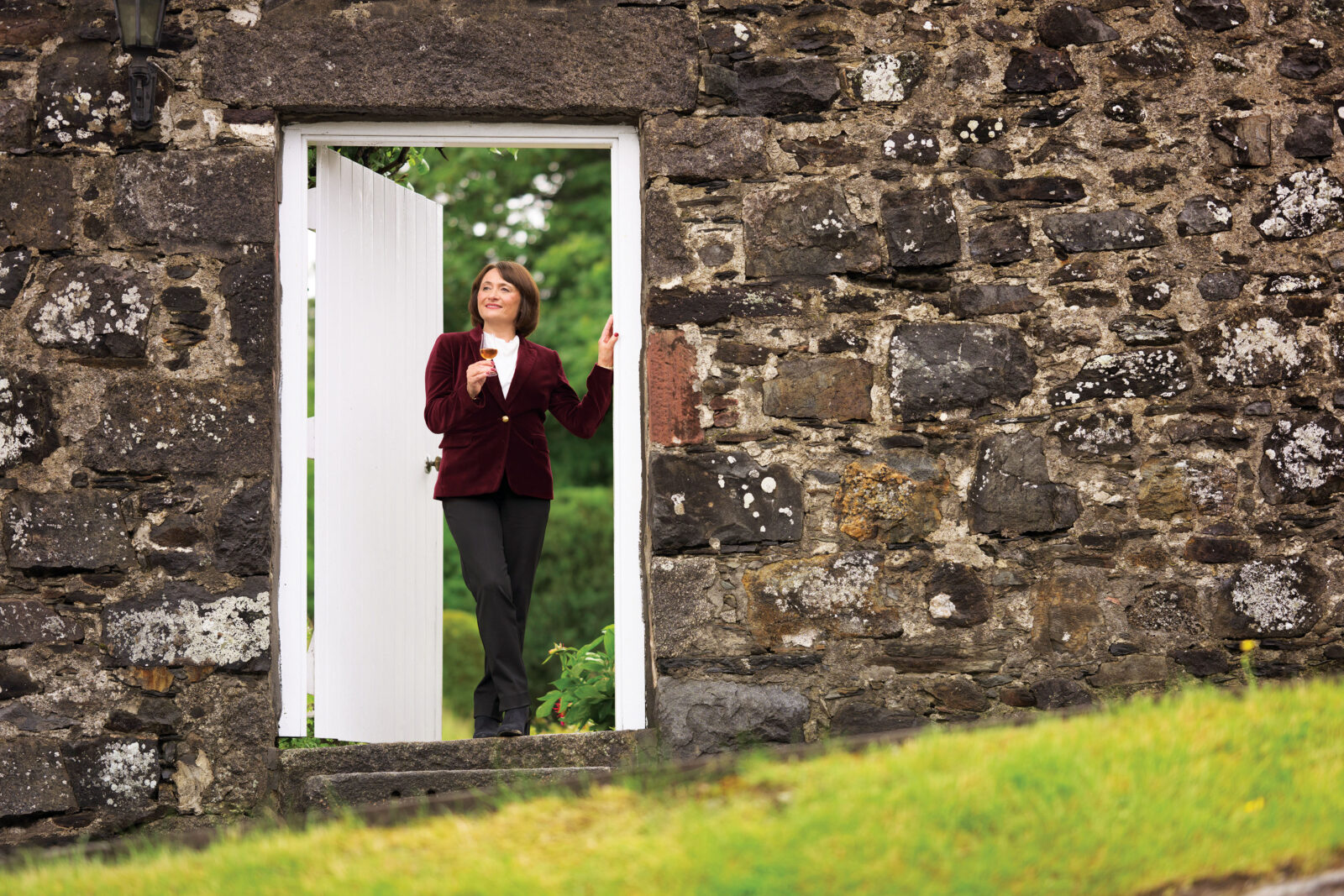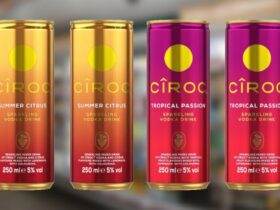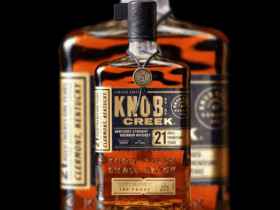
She is a legend in the world of Scotch whisky. From being the first woman Master Blender, Dr. Rachel Barrie has charted a path, spanning over three decades, that has created such wonderful whiskies that the world loves. Having worked under another legendary whisky icon, Dr. Jim Swan, she perfected the art and science at Glenmorangie, Ardberg, and Bowmore. Since 2017, Dr. Barrie has been with Brown Forman as a Master Blender leading the team at Glendronach, Benriach and Glenglassaugh distilleries. Here in an interview with Ambrosia, Dr. Barrie speaks at length on the art of blending, global whiskies and her journey. Excerpts…
Let’s begin from the beginning. You were originally trained as a chemist, when and how did the switch happen?
Whilst a Chemistry student, I loved visiting distilleries and tasting different malts. One serendipitous
moment in 1992, I happened to be passing the Edinburgh University careers service on the last day a
job was advertised as a Research Scientist at The Scotch Whisky Research Institute, working for Dr
James Swan, and I got the job! After a few years of research, I moved into production and made
strides to get to know every part of the whisky business, from wood management, warehousing,
distillation and spirit quality to marketing, finance and sales around the globe. In 2003, I was made
Master Blender, the first woman to be officially given this title, and the rest is history.
You are supposed to be the ‘World’s First Female Master Blender’, how did that happen?
I was given the title after working in the spirits industry in whisky research, quality management and
product development for over 11 years, by which time I had analysed close to 60,000 casks. In 2003,
I was approached to join a different whisky company in a role that was a ‘step up’ from my then
current position. Instead of accepting the position, I went back to my current company to let them
know the deal. Within a day, the directors at the company promoted me to Master Blender, and the
rest is history. I took a risk, negotiated, and fortunately, was recognised and rewarded. From this
defining moment, the bar was raised and the door was opened for others to follow.
Is there anything that a woman Master Distiller does differently from a man? Or one has to just follow scientific protocols, irrespective of gender?
I firmly believe that every Master Distiller and/or Master Blender shares much in common with their
industry cohorts and peers. We are a highly skilled and experienced group of people who share the
necessary knowledge to make and influence business decisions relating to whisky quality, strategic
inventory planning and management, product development, innovation and portfolio planning, sales
and marketing; working across functions (operations, finance, global advocacy) to cultivate
performance and strive for excellence.
How is the alcobev industry, more so spirits, workwise for women – conducive environment, pay parity etc.?
The spirits industry is a great place for women to work, especially the Scotch whisky industry. We
make, market and sell a premium, luxury product in which our goal is to ‘build better’ and raise
expectations. In order to make and deliver excellence, every touchpoint in making, marketing and
selling our whiskies must strive for excellence, creating an environment of respect, integrity, trust and teamwork to deliver excellence. These values in their very essence create a great working
environment, where people treat each other with respect, trust each other and build better together. I think there is also pay parity, with pay reflecting the responsibilities of the role, skills, knowledge and experience.
What is one distinctive trait that a Master Distiller should have?
A Master Distiller/Blender should have ‘the perfect blend’ of critical and creative thinking paired with
heightened senses. By this, I mean the ability to detect, describe and process sensory information,
literally connecting all the senses, as a means of informing and enhancing critical thinking processes.
This means actively engaging the senses (especially the sense of smell) to gather sensory
information about the spirit, whisky, and environment, then applying logical and scientific analysis,
data insights, reasoning, and evaluation to that information (in addition to market and product
insights) to form sound judgments, solve problems and create exquisite, desirable, relevant and
increasingly successful whisky expressions and ranges.
You have been with Brown-Forman for almost eight years now, what has been the highpoint in this journey?
There have been many highpoints in the past eight years, however, the most richly rewarding moments are when, after years of whisky making and rich collaboration across teams, the excitement peaks and momentum builds when new whiskies and product ranges are launched around the globe; such as the new Benriach range in 2020, the relaunch of Glenglassaugh in 2023, and in 2024, The Glendronach rebrand with the beautiful new bespoke packaging, reflecting the exquisite nature of the whisky within.
With each distillery launch, I have been privileged to have the opportunity to travel to share the
whiskies. The highlight for me is seeing people’s eyes light up with excitement and delight, as they
discover the rich rewards revealed before them. In turn their feedback inspires me to create and
fine-tune whisky creation on a never-ending path to excellence.
This year, in 2025, the highlight is happening right now with the launch of The Glendronach Master’s
Anthology, the new range which celebrates the breadth and depth of The Glendronach house style.
From its robust Highland character to the rich dimensions created through sherry cask maturation,
each of the three expressions tells a different ‘Ode’ or story. Ode to the Valley is like a summer picnic
in the Highlands with the rich fruit-filled abundance of berries, glazed apricot and nectar. Ode to the
Embers is like coming inside to a smouldering fire with toffee apples, roasted nuts and spiced fruit;
and Ode the Dark is like basking in the rich splendour of velvet mocha, black grape and espresso. As you can imagine, I am super-excited to be sharing The Masters Anthology!
The Glendronach, Benriach and Glenglassaugh distilleries under your belt – As a Master Blender how do you keep them distinct of each other?
Even though the three distilleries sit just 30 or so miles apart, they are all incredibly different to one
another, located in distinctly different landscapes; I often describe our distilleries as taking you from
the glen, to the ben, to the sea. Glenglassaugh is our coastal malt, named as such not only because
the distillery physically sits on the shore of the breathtaking Sandend Bay, but also because it has a
distinctively sweet, luscious and coastal character, shaped by land and sea as it matures in our coastal warehouses. We launched Glenglassaugh’s new portfolio in the summer of 2023 which was
spearheaded by the release of a flagship 12 Year Old statement. In addition to the 12 Year Old, the
core range features Sandend, inspired by the crescent beach of the Bay and matured in bourbon,
sherry and manzanilla casks for luscious waves of flavour of tropical sweetness.
Then we have Benriach, which launched its new portfolio in 2020 encompassing a huge spectrum of
flavour possibilities with each multi-layered expression. Benriach has a very creative distilling heritage and lends itself very well to experimentation, which is something we are very proud of and look to continue exploring through maturation in a range of curated casks sourced from all over the world.
The Glendronach is different again – a richly sherried Highland Single Malt with enormous amounts of depth and character, with its distinctively robust and fruity Highland spirit and “Sherry Crescendo”,
created by maturing in the finest Spanish oak Pedro Ximénez and Oloroso sherry casks sourced from
Andalucia in southern Spain, a duality which has become the distillery’s hallmark. The distillery itself,
which is amongst the oldest in Scotland, is nestled in the valley of Forgue in the Scottish Highlands
The global trend is premiumisation and also that the younger generation are always looking for immersive experiences – As a Master Blender how do you factor their palate needs, their quest for experimentation, their aspirations (could you give examples)?
The whisky industry is very good at adapting to the times, having sustained market changes over the
centuries; it also ‘stays young at heart’, bringing in new talent to remain relevant as the world changes and grows. Scotch whisky has a great way of bringing people of all ages together, sharing in the rich diversity of style and individuality of character of single malts. Much of the world, especially Asia, is just now discovering the richness and complexity of single malt Scotch whisky, which I am confident will grow year-on-year.
As an adventurous soul myself, I am a big fan of immersive experiences to create magical and
memorable moments that enrich life. First and foremost, when I create whisky, my goal is for it to be
rich, expressive and ‘giving’ in character, telling a story that evokes memories and stirs emotions. For
example, The Glendronach Master’s Anthology immerses the senses in the rich abundance of
nature’s storytelling, evocative of a place, time, thoughts, memories and experiences, all of which
come flooding into your imagination when you look, smell and taste. They literally open the door to
your mind’s eye, whether telling stories of sun-kissed summer picnics, autumn harvests, or dinner
parties after dark.
What do you think of the growing trend of low alcohol or no alcohol?
No and low alcohol drinks have certainly increased in offerings in recent years, and some can be quite tasty, although I’ve yet to find any that deliver the flavour experience of a naturally fermented or distilled alcohol beverage. Time will tell whether they’re here to stay.
I tend to make my own no and low alcohol drinks, through mocktails and lower alcohol cocktails. To hydrate, I love natural, healthy soft drinks, such as a refreshing sparkling mineral water with ice and lemon, and enjoy mixing ‘low alcohol’ drinks such as a refreshingly long Glenglassaugh Highball with fresh pineapple juice, soda water and ice. The hotter the weather, the more water and ice is added, to stay healthily hydrated.
Japanese whiskies are making significant ground, what do you think of their whiskies and will they upstage Scotch?
I have huge respect for Japanese whiskies, with their fine, delicate style. However, I strongly believe that single malt Scotch whisky is the most complex and richly characterful of all world whiskies, with its exceptional diversity of style and individuality of character, reflective of the rich diversity of our landscape. Within a very small geographical area, the three distilleries I work with are highly distinctive in character, from Benriach in Speyside with its orchard fruit-filled style, The Glendronach in the rich fertile landscape of the Eastern Highlands, with its rich and robust sherry cask matured Highland style, and Glenglassaugh on the coast with its luscious, tropical sweetness and salinity.
I think single malt Scotch whisky will further elevate and cement its position as the pinnacle of the whisky world, as the industry continues to raise the bar, take centre stage and strive for excellence in whisky-making.
Globally, you see new single malt markets emerging – India is one of them – have you tasted any of the Indian single malts, if yes, what do you think of the same?
Yes, I have tasted a few Indian single malts, and I have found them to be very interesting, although younger and more spicy in style than is my preference. Maturation is clearly faster with more dense caramelisation (an aspect I find similar to a bourbon), however, due to the higher evaporation rate of 10-15% per year, it will be very rare to see an Indian single malt reach even 12 years old and certainly not the grand old age of 30 or 40 years old!
I think India is a huge opportunity for our malts, especially The Glendronach in the first instance. With its robust style and richness of taste from sherry cask maturation, we are fortunate to have age statements from 12, 15, 18, 21 and even older, and I strongly believe The Glendronach will be a huge success when it begins to be sold in India.
What is your favourite drink?
My favourite mixed drink/cocktail is the classic Blood & Sand. Delicious when made with The
Glendronach 12 Year Old sherry cask matured single malt, mixed with sweet vermouth, fresh blood
orange juice and cherry liqueur, it really makes the malt shine.











Leave a Reply